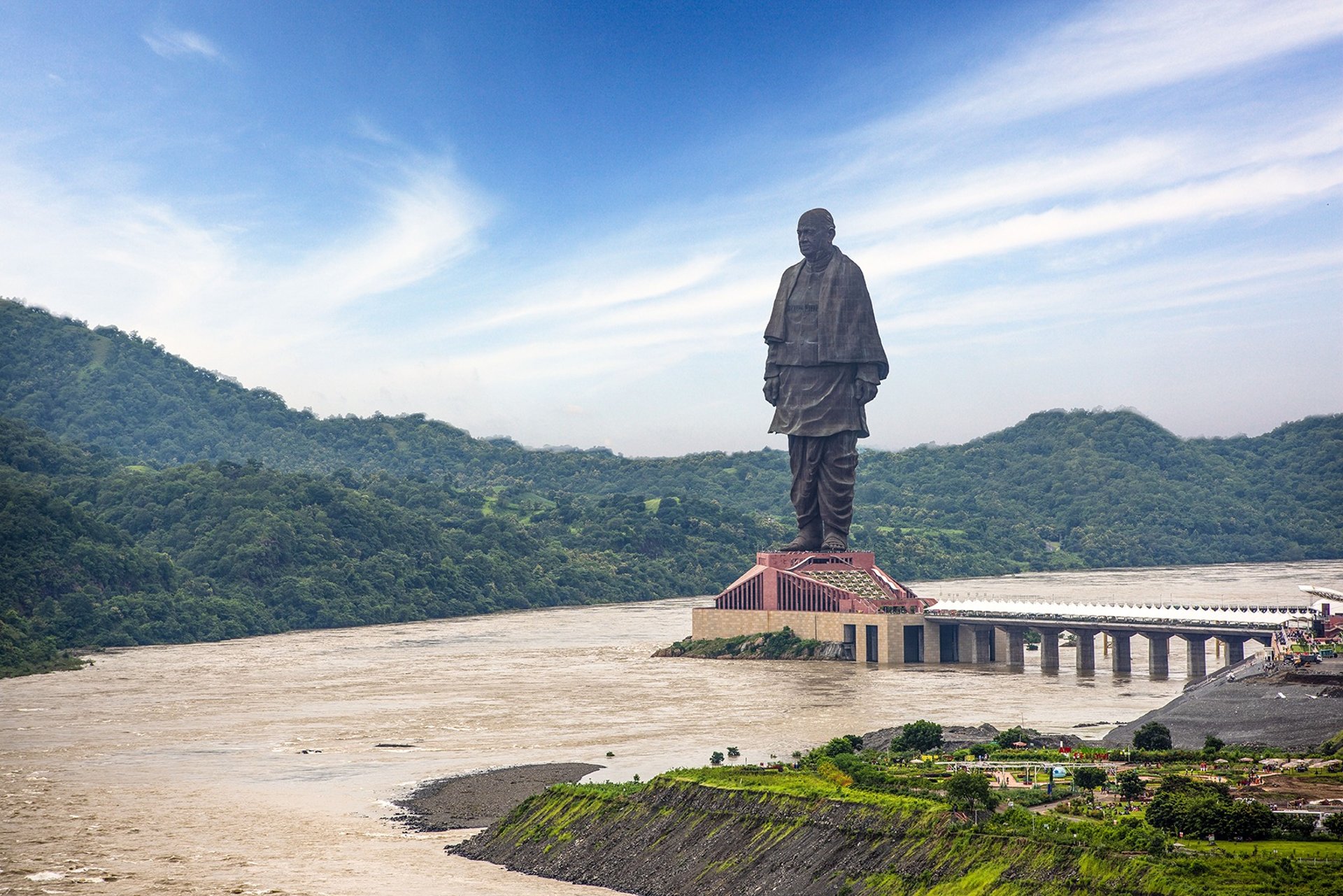
Statue of Unity, Gujarat
Visit the Statue of Unity
The Statue of Unity is a colossal monument dedicated to Sardar Vallabhbhai Patel, a pivotal figure in India's struggle for independence and the country's first Deputy Prime Minister and Home Minister. Located in the state of Gujarat, the statue stands as a tribute to his efforts in unifying the 562 princely states to form the modern Republic of India. The monument's name itself, "Statue of Unity," reflects its purpose of symbolizing national integrity and harmony.
Facts and Figures
Height: At 182 meters (597 feet), it is the world's tallest statue, almost twice the height of the Statue of Liberty. The height of 182 meters was specifically chosen to match the number of seats in the Gujarat Legislative Assembly.
Design: Designed by Indian sculptor Ram V. Sutar, the statue depicts Sardar Patel in a walking pose, which posed a unique engineering challenge due to its slender base.
Construction: Built in just 46 months by Larsen & Toubro, the project used 70,000 metric tonnes of cement, 6,000 metric tonnes of structural steel, and 18,500 metric tonnes of reinforcement bars.
Materials: The outer façade is made of 1,700 tonnes of bronze plates. As part of a unique initiative, iron for the statue was collected from farmers' used farming equipment across the country.
A Monumental Structure
Standing at an impressive 182 meters (597 feet) from its base, the Statue of Unity is the world's tallest statue. Its height was chosen to match the total number of democratic assembly constituencies in the state of Gujarat. Situated on the Sadhu Bet island in the Narmada River, the statue overlooks the Sardar Sarovar Dam and is framed by the scenic Vindhyachal and Satpura mountain ranges. The statue is a naturalistic depiction of Sardar Patel in a walking pose, with a shawl draped over his shoulders and his feet clad in traditional sandals. This pose presented a unique engineering challenge due to its slender width-to-height ratio, which required specialized structural design to withstand wind speeds of up to 180 km/h and earthquakes measuring up to 6.5 on the Richter scale. The structure is built with a steel framework, reinforced concrete, and is clad with approximately 1,700 tonnes of bronze plates.
Conception and Construction
The project was first announced in 2010 by Narendra Modi, then the Chief Minister of Gujarat. The foundation stone was laid on October 31, 2013, on the 138th birth anniversary of Sardar Patel. A special purpose vehicle, the Sardar Vallabhbhai Patel Rashtriya Ekta Trust (SVPRET), was created to oversee the project. A nationwide "Statue of Unity Movement" was initiated to collect iron from farmers' used farming instruments, symbolizing a collective contribution from the people of India. This effort gathered over 135 metric tonnes of scrap iron, with a portion used in the statue's foundation.
The design was created by the renowned Indian sculptor Ram V. Sutar. To bring the intricate design to life, a consortium of Indian and international firms, led by Larsen & Toubro, was responsible for the construction. The project involved over 3,400 workers and 250 engineers. After 57 months of planning and construction, the monument was completed in mid-October 2018 and was inaugurated on October 31, 2018.
Visitor Experience and Attractions
The Statue of Unity is more than just a monument; it is a major tourist destination with several attractions. The monument itself is divided into five zones, with three open to the public. These include a museum and a viewing gallery located at a height of 153 meters inside the statue's chest. The viewing gallery can accommodate up to 200 visitors at a time and offers a panoramic view of the dam and the surrounding landscape.
Other attractions in the complex include a "Valley of Flowers" with a variety of floral species, a laser light and sound show that narrates Sardar Patel's life story and his contribution to India's unification, a "Wall of Unity" made from the collected soil from across the country, a museum, and a research center. The monument's complex also features a selfie point, food court, and various other amenities, making it a comprehensive and engaging tourist destination. The Statue of Unity stands as a powerful symbol of India's history, its engineering prowess, and the enduring legacy of a leader who united a nation.

Contact
Get in touch for your travel needs.
© 2025. All rights reserved.
